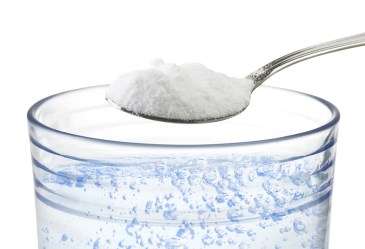Incredible Exploding Sandwich Bag Science Activity

Incredible Exploding Sandwich Bag Science Activity
If a baking soda rocket wasn't enough of an explosion for your child, then this experiment is bound to be more his style. Using the same acid-base reaction that makes quick bread rise when you cook, this experiment shows that sometimes, combining common household products can be explosive without being dangerous. However, this experiment is definitely messy! Take your materials outside, or choose a place to "explode" your sandwich bag that can be cleaned up easily. Try the kitchen sink, the bathtub, or even a big plastic toy bin.
Skills Being Practiced
- Scientific inquiry
- Observing chemical reactions
- Following experimental procedure
What You Need
- Sandwich-size zip-top plastic bags
- Paper towels
- Scissors
- Ruler
- Measuring cup
- Measuring spoons
- Baking soda
- Vinegar
- Warm water
How to Play
1. Enlist your child's help in locating a zip-top bag that doesn't leak. Though you may think that a bag that comes right out of the box would be leak free, sometimes the seams let water through, and using a watertight bag is crucial to the experiment. To check for leaks, fill each sandwich bag about half full with water, close it, turn it upside down, and shake it around. Once you find a few nonleaky bags, empty them and set them aside.
2. Ask your child to measure a 5" x 5" square of paper towel, and use a pencil to mark it off. Check his measurements and then ask him to cut out the square.
3. Lay the paper towel square down on a flat surface. Measure 1 ½ tablespoons of baking soda, and place it in the middle of the paper towel.
4. Help your child fold the paper towel into a small packet. Begin by folding the top third over the mound of baking soda, then folding the bottom third up over it as well. Then fold each side into the middle of the rectangle, creating a small square. This is your timed-release "explosive" packet. Set it aside.
5. Have your child measure ½ cup of vinegar. Hold open a sandwich bag while he pours the vinegar inside. Continue holding the bag while he measures and pours in ¼ cup of warm water. 6. This next step requires some fast moving on the part of both you and your child. Zip the sandwich bag about halfway closed. Stuff your timed release packet inside while you very quickly zip up the rest of the bag.
7. Make sure the bag is secure, then shake it a little bit. Place it on the ground or in the designated safe zone, move back, and watch as the bag expands and explodes!
Questions to Ask
- Why didn't the sandwich bag explode right away?
- Do you think the size of the bag made a difference in the outcome of this experiment?
- What do you think would have happened with a snack-size bag, a quart bag, or a gallon bag?
- What do you think would happen if you just mixed water with baking soda?
- What would happen if you mixed just vinegar with baking soda?
- Would the experiment change if you used tissue paper or construction paper instead of a paper towel?
What's Going On
Once the paper towel dissolves, the baking soda is mixed with the vinegar-water solution. Since vinegar is an acid and baking soda is a base, it creates a chemical reaction called an acid-base reaction. The acid-base reaction makes carbon dioxide gas, which needs more space than the sandwich bag can accommodate. It keeps filling the bag until there isn't any more room. The gas then pops out the seams and tops of the bag with a loud (and very visible) explosion.